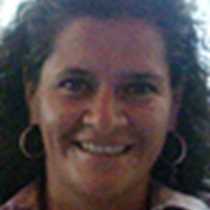Fernandina and Isabela Islands
Located in the westernmost area of the Galápagos, Fernandina and Isabela are the youngest islands of them all, being just over a hundred miles away from the hot spot. This part of the archipelago remains volcanically active, with eruptions happening constantly.
Fernandina welcomed us with a mass of marine iguanas at the landing jetty; the iguanas at Punta Suarez are the largest in Galápagos, and their incredible size is due to the abundance of algae found in the area. The iguanas have been nesting on this point, so we needed to be extremely careful not to walk on the hundreds of nests that were everywhere we looked. A few snakes were waiting for the hatchlings that will start to emerge from these nests pretty soon.
A walk over lava transported us back in time; lava cactuses colonizing the bare lava flows and making the very first fertile soils so other species of vegetation could eventually be successful showed us the fragility of these ecosystems that should be protected for all future generations.
Snorkeling was again a unique opportunity. Having the chance to snorkel with the Pacific green sea turtles that inhabit Punta Vicente Roca at Isabela Island was probably one of the greatest experiences of the week. The tameness of these creatures was contagious and made us all relax and enjoy the water activity to its fullest.
As we sailed past the "head of the sea horse" that best describes the northern part of Isabela, we could easily distinguish the shield-shaped volcanoes that make oceanic islands. Being able to see the physical differences between the old and new islands, we began to understand how geological time has shaped this particular archipelago.
During our Zodiac ride in the afternoon we were surrounded by wildlife; the productivity of the water in the area is explained by the abundance of nutrients that are brought by the Cromwell Current, which hits the very base of the two islands and up-wells to the surface; it is responsible for the penguins, flightless cormorants, blue-footed boobies, pelicans, marine iguanas, etc.
The light at the end of the day, together with the volcanic landscape, filled us with equatorial energy at sunset time.




